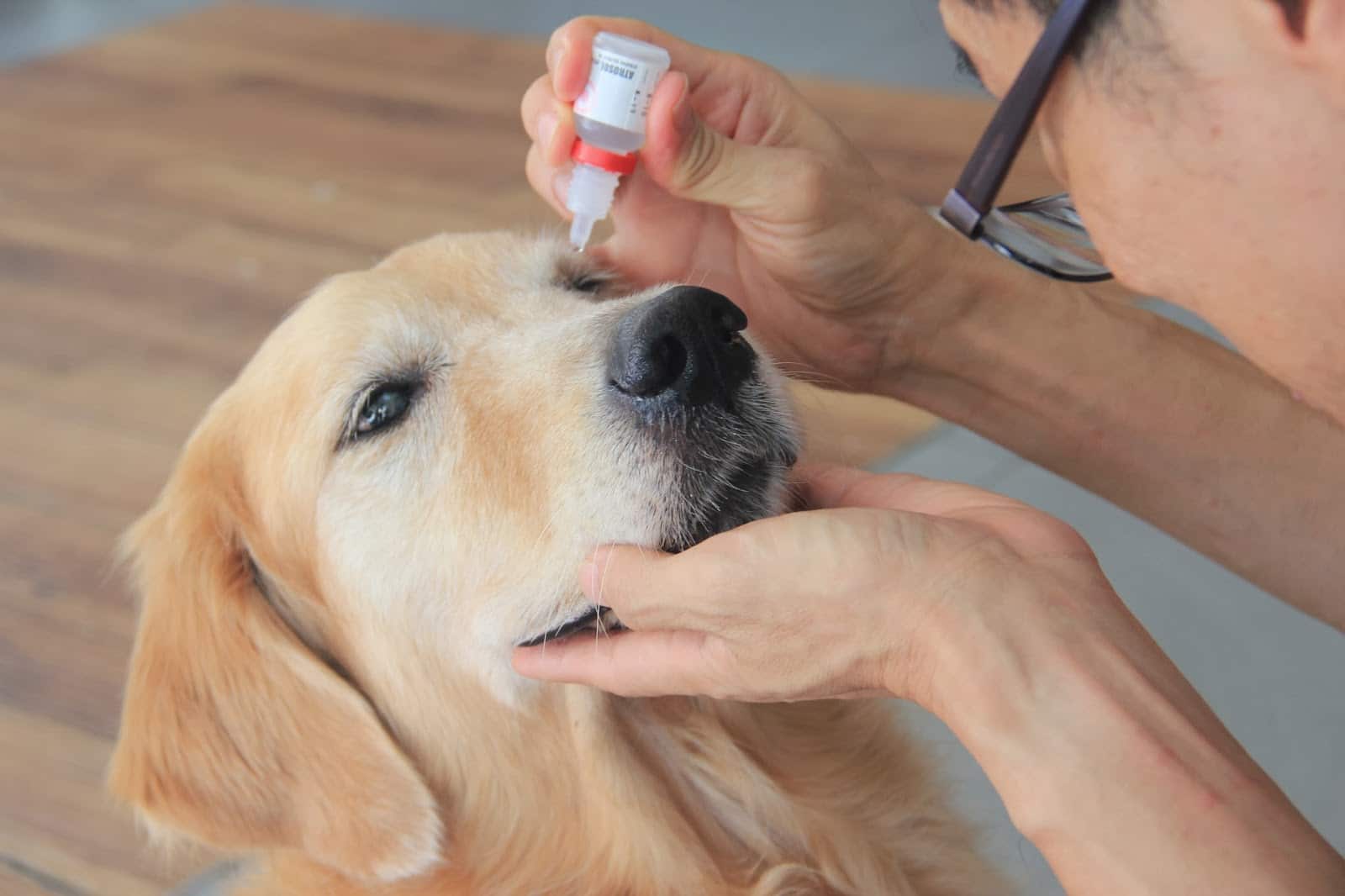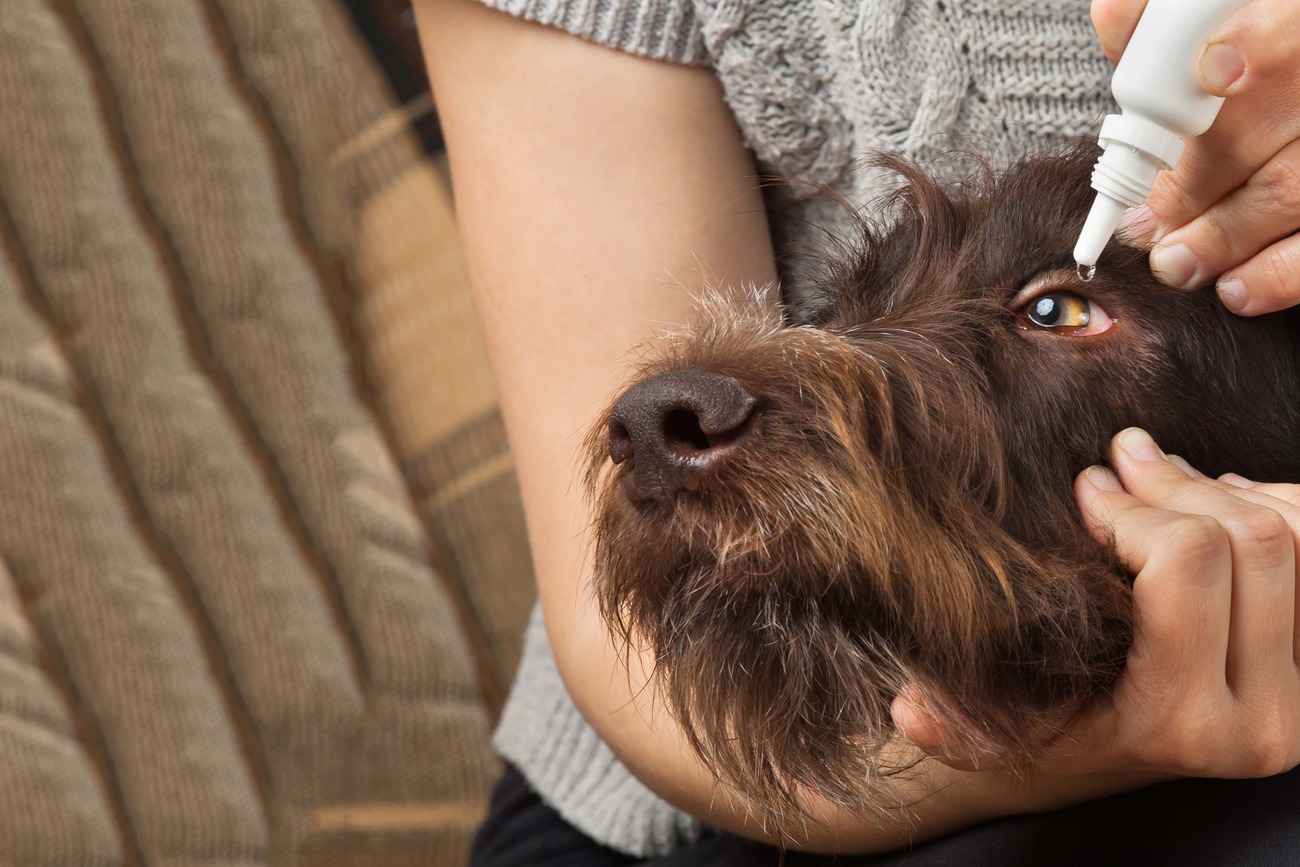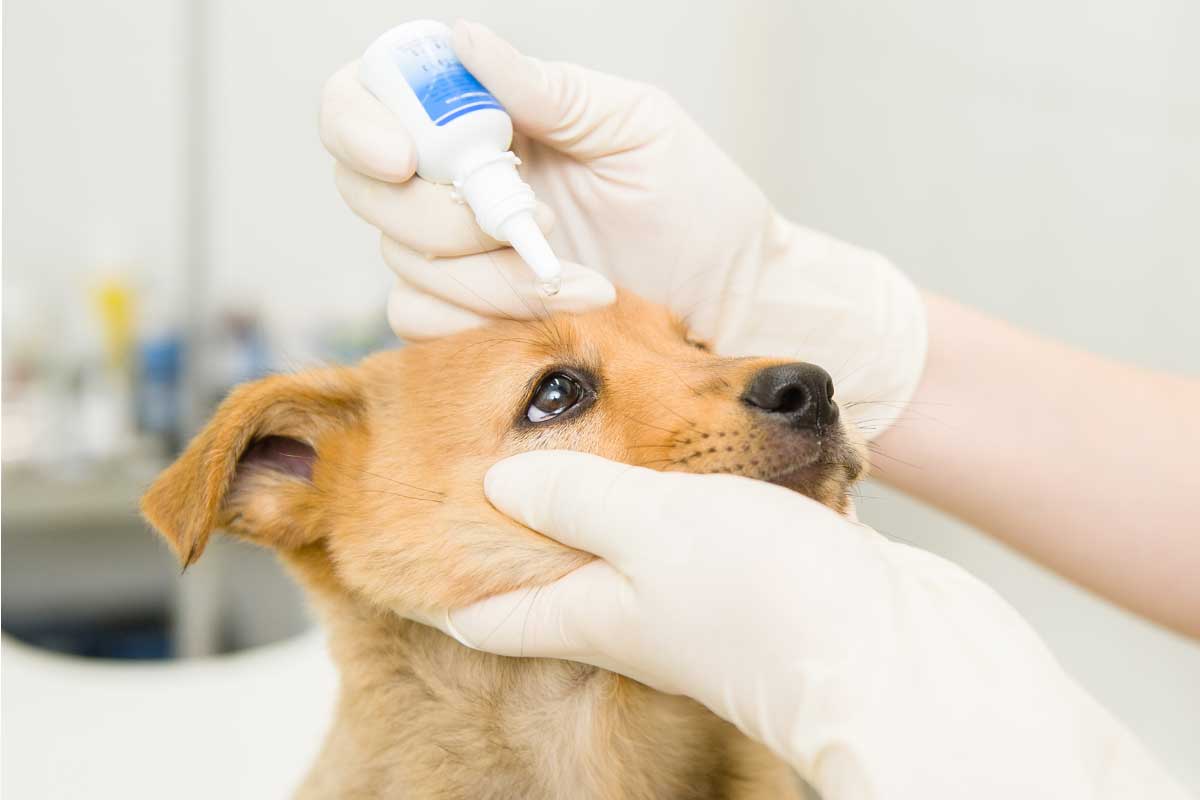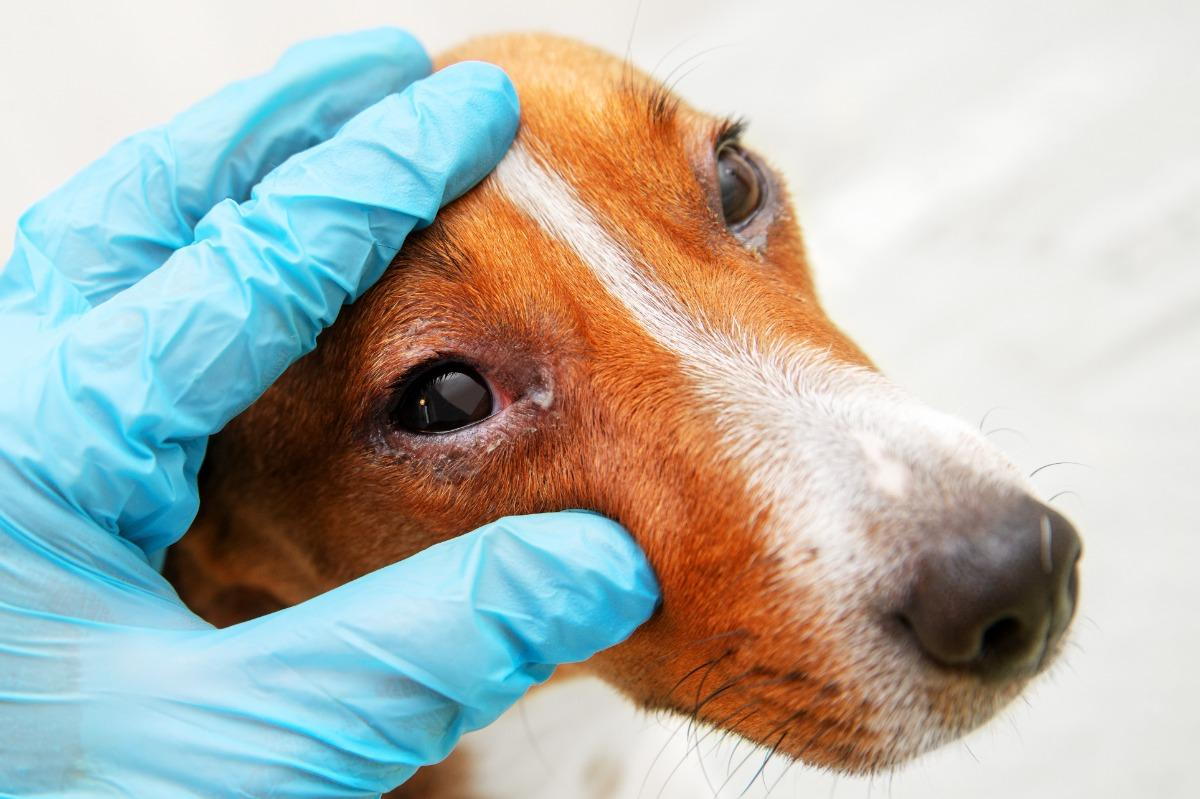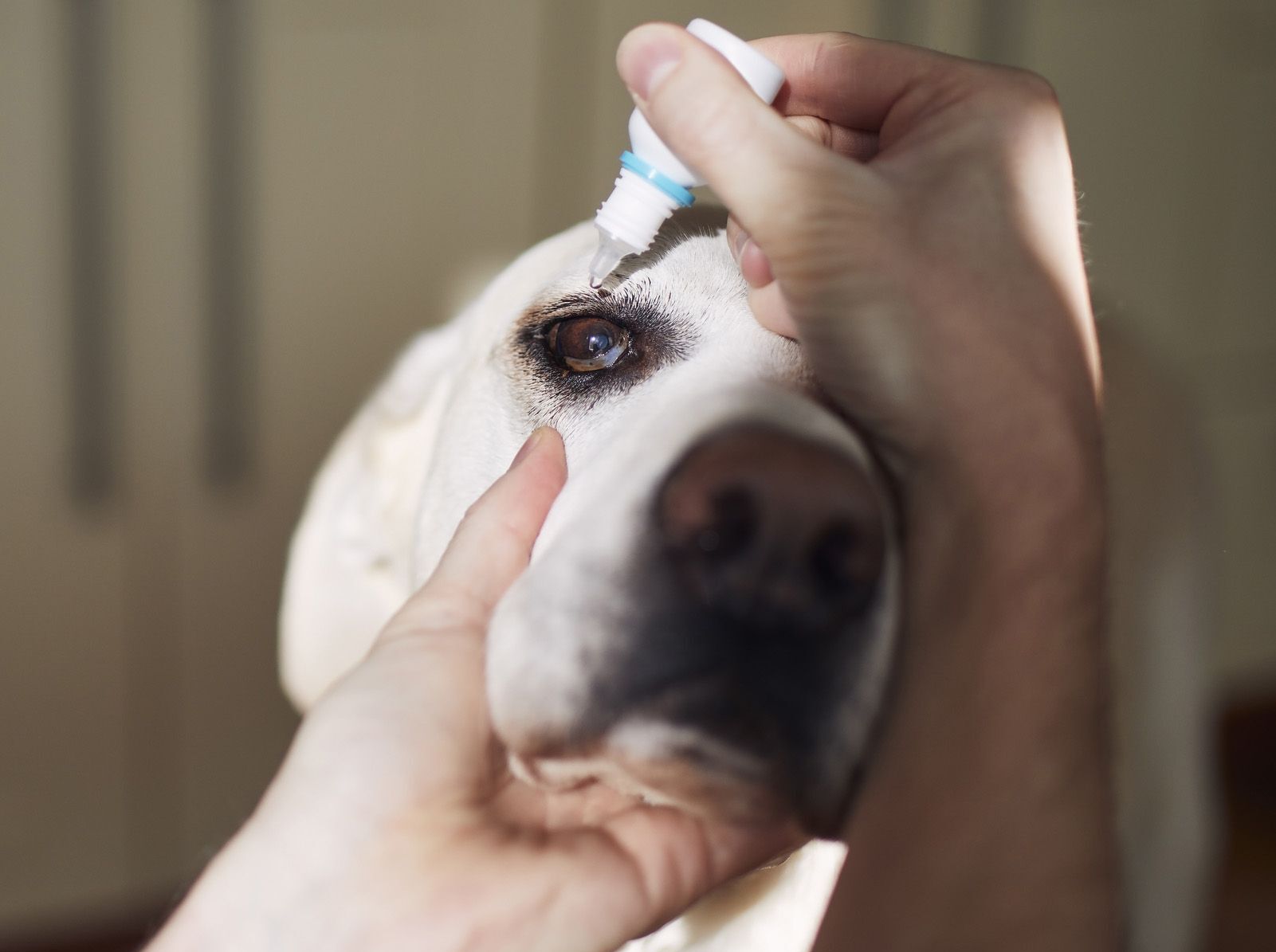Home>Health & Wellness>Common Health Issues>What Kind Of Allergy Eye Drops Are Safe For Dogs
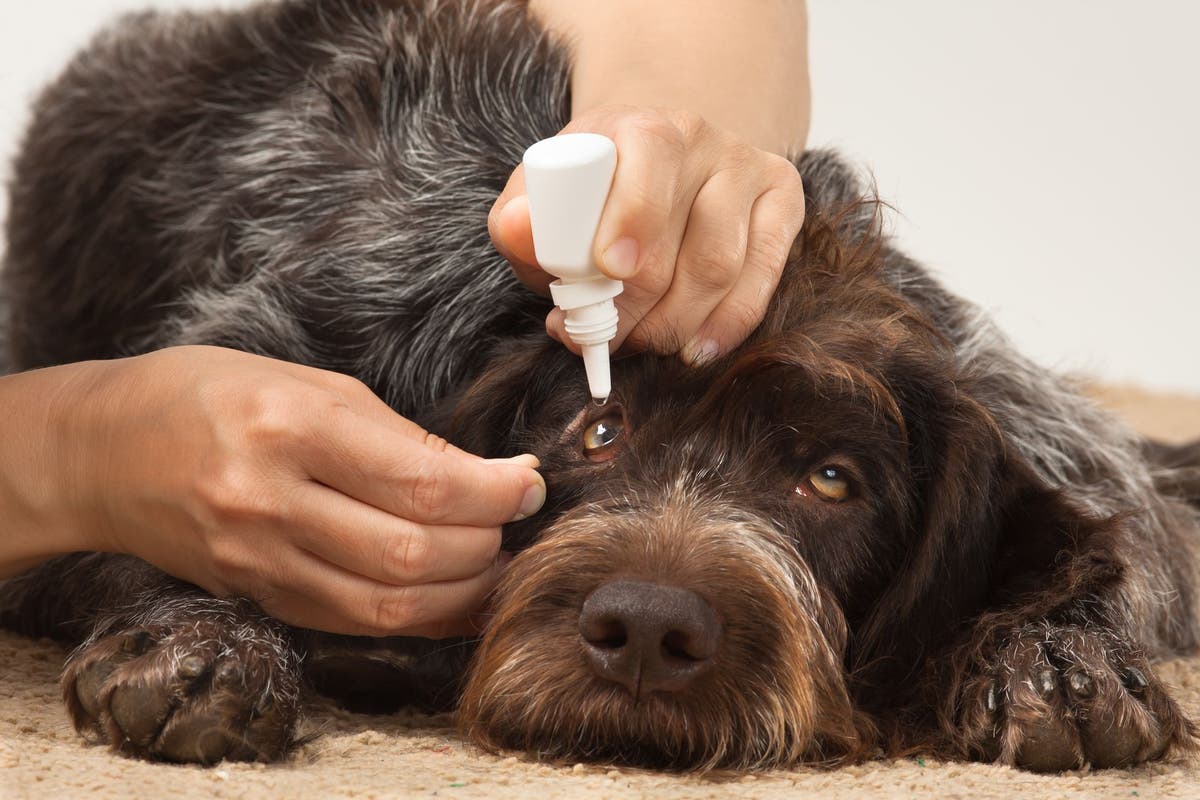

Common Health Issues
What Kind Of Allergy Eye Drops Are Safe For Dogs
Modified: February 21, 2024
Discover safe allergy eye drops for dogs and learn how to address common health issues. Keep your furry friend happy and healthy with the right care.
(Many of the links in this article redirect to a specific reviewed product. Your purchase of these products through affiliate links helps to generate commission for Pawsomeoldies.com, at no extra cost. Learn more)
Table of Contents
Introduction
When our furry companions are suffering from allergies, it can be distressing for both them and us. One common symptom of allergies in dogs is irritated, itchy, or watery eyes. Just as we seek relief from allergies, it's essential to ensure our canine friends receive the care they need to alleviate their discomfort.
Allergy eye drops for dogs can provide much-needed relief by soothing irritated eyes and reducing inflammation caused by allergies. However, it's crucial to understand that not all eye drops are safe for our canine companions. Just as we carefully select products for our own health, it's important to be discerning when choosing allergy eye drops for our dogs.
In this comprehensive guide, we will delve into the world of allergy eye drops for dogs, exploring the types of eye drops available, safe ingredients to look for, potential side effects, and tips for administering these drops effectively. By the end of this journey, you will be equipped with the knowledge to make informed decisions about the best allergy eye drops for your beloved canine companion.
Understanding Allergies in Dogs
Allergies in dogs are a common occurrence and can manifest in various ways, including skin irritation, respiratory issues, and eye discomfort. Just like humans, dogs can be allergic to a wide range of environmental factors, such as pollen, dust mites, mold, and certain foods. When a dog comes into contact with an allergen, their immune system may overreact, leading to the release of histamines and other chemicals that cause allergic symptoms.
When it comes to eye allergies in dogs, the condition is often referred to as allergic conjunctivitis. This occurs when the conjunctiva, the thin membrane that covers the eye and lines the eyelids, becomes inflamed due to exposure to allergens. Common signs of allergic conjunctivitis in dogs include redness, itching, excessive tearing, and sometimes discharge from the eyes.
It's important for dog owners to recognize the signs of allergic reactions in their pets, as untreated allergies can lead to discomfort and potential complications. Allergies can significantly impact a dog's quality of life, causing them to feel irritable, fatigued, and generally unwell.
In some cases, allergies can also lead to secondary infections if the constant itching and rubbing of the eyes cause abrasions or breaks in the skin, creating an entry point for bacteria. Therefore, addressing allergies promptly and effectively is crucial for maintaining a dog's overall health and well-being.
Understanding the nature of allergies in dogs is the first step toward providing them with the care they need. By recognizing the symptoms and triggers of allergic reactions, dog owners can take proactive measures to manage their pet's allergies and alleviate their discomfort. This includes seeking appropriate treatment, such as allergy eye drops, to soothe irritated eyes and minimize allergic reactions.
In the following sections, we will explore the types of allergy eye drops available for dogs, safe ingredients to look for, potential side effects, and tips for administering these drops effectively. Armed with this knowledge, dog owners can make informed decisions to support their furry companions in managing their allergies and enjoying a better quality of life.
Types of Allergy Eye Drops for Dogs
When it comes to addressing allergic conjunctivitis in dogs, there are several types of allergy eye drops available, each designed to alleviate discomfort and reduce inflammation in the eyes. Understanding the different types of allergy eye drops can help dog owners make informed decisions about the most suitable option for their pet's specific needs.
-
Antihistamine Eye Drops: These eye drops work by blocking the effects of histamine, a chemical released by the body during allergic reactions. By inhibiting histamine, antihistamine eye drops help reduce itching, redness, and swelling in the eyes. Common antihistamine ingredients found in dog eye drops include cetirizine and olopatadine.
-
Steroid Eye Drops: Steroid eye drops are effective in reducing inflammation and suppressing the immune response that leads to allergic symptoms. They can provide rapid relief from itching and redness in the eyes. However, it's important to use steroid eye drops for dogs under the guidance of a veterinarian, as prolonged or inappropriate use can lead to potential side effects.
-
Mast Cell Stabilizer Eye Drops: Mast cells are involved in the release of histamine and other inflammatory substances during allergic reactions. Mast cell stabilizer eye drops work by preventing the release of these substances, thereby reducing allergic symptoms in the eyes. Common ingredients in mast cell stabilizer eye drops for dogs include sodium cromoglicate and nedocromil.
-
Combination Eye Drops: Some allergy eye drops for dogs may contain a combination of antihistamine and mast cell stabilizer ingredients to provide comprehensive relief from allergic conjunctivitis. These combination eye drops can target multiple aspects of the allergic response, offering a more holistic approach to managing eye allergies in dogs.
-
Preservative-Free Eye Drops: Dogs, like humans, can be sensitive to preservatives commonly found in eye drops. Preservative-free allergy eye drops are formulated to minimize the risk of irritation or adverse reactions in dogs with sensitive eyes. These gentle formulations can be particularly beneficial for dogs prone to allergic reactions or those with pre-existing eye conditions.
When selecting allergy eye drops for dogs, it's essential to consult with a veterinarian to determine the most appropriate option based on the dog's specific condition and medical history. Additionally, it's crucial to follow the veterinarian's instructions regarding the proper administration and frequency of use for the chosen eye drops.
By understanding the different types of allergy eye drops available for dogs, dog owners can make informed choices to support their pet's eye health and overall well-being. With the right eye drops and proper care, dogs can experience relief from allergic conjunctivitis, allowing them to enjoy a more comfortable and vibrant life.
Safe Ingredients to Look for in Allergy Eye Drops
When selecting allergy eye drops for dogs, it's crucial to prioritize the safety and well-being of our furry companions. The ingredients contained in these eye drops play a significant role in determining their effectiveness and potential impact on a dog's eye health. By understanding the safe and beneficial ingredients to look for in allergy eye drops, dog owners can make informed choices to support their pet's eye care needs.
-
Natural Lubricants: Look for allergy eye drops that contain natural lubricants such as glycerin or hyaluronic acid. These ingredients help to moisturize and soothe the eyes, providing relief from dryness and irritation associated with allergic conjunctivitis. Natural lubricants can also support the overall health of the ocular surface, promoting comfort and clarity of vision for dogs.
-
Antihistamines: Safe and effective antihistamine ingredients commonly found in allergy eye drops for dogs include cetirizine and olopatadine. Antihistamines work by blocking the action of histamine, a chemical released during allergic reactions, thereby reducing itching, redness, and swelling in the eyes. When used in appropriate concentrations, antihistamines can provide relief from allergic symptoms without causing adverse effects.
-
Mast Cell Stabilizers: Ingredients such as sodium cromoglicate and nedocromil act as mast cell stabilizers in allergy eye drops for dogs. These compounds help prevent the release of histamine and other inflammatory substances, thereby reducing the severity of allergic reactions in the eyes. Mast cell stabilizers are known for their safety and efficacy in managing allergic conjunctivitis in dogs.
-
Preservative-Free Formulations: Dogs with sensitive eyes or pre-existing eye conditions may benefit from preservative-free allergy eye drops. These formulations minimize the risk of irritation or adverse reactions, making them suitable for dogs prone to allergies or those with delicate ocular tissues. By opting for preservative-free eye drops, dog owners can prioritize the comfort and safety of their pet's eyes.
-
Hyaluronic Acid: This natural compound is known for its moisturizing and soothing properties. Allergy eye drops containing hyaluronic acid can help maintain proper hydration of the eyes, supporting tear film stability and ocular surface health. Hyaluronic acid is gentle and well-tolerated, making it a safe ingredient for dogs with allergic conjunctivitis.
By seeking allergy eye drops that incorporate these safe and beneficial ingredients, dog owners can provide their pets with effective relief from allergic conjunctivitis while minimizing the risk of adverse reactions. It's important to consult with a veterinarian to determine the most suitable eye drops for a dog's specific condition and to receive guidance on proper administration and frequency of use. With the right ingredients and proper care, allergy eye drops can contribute to improving a dog's eye health and overall quality of life.
Potential Side Effects of Allergy Eye Drops for Dogs
While allergy eye drops for dogs are designed to provide relief from allergic conjunctivitis and eye discomfort, it's important for dog owners to be aware of potential side effects that may arise from the use of these products. Understanding the possible adverse reactions can help pet owners make informed decisions and take appropriate measures to ensure the safety and well-being of their canine companions.
-
Eye Irritation: In some cases, dogs may experience mild irritation or stinging in the eyes upon the application of allergy eye drops. This can lead to increased blinking, rubbing of the eyes, or temporary discomfort. It's essential for dog owners to observe their pets closely after administering the eye drops and seek veterinary advice if persistent irritation occurs.
-
Allergic Reactions: While allergy eye drops are intended to alleviate allergic symptoms, it's important to note that dogs can potentially have allergic reactions to certain ingredients in the eye drops. Signs of an allergic reaction may include redness, swelling, or increased tearing in the eyes. If any of these symptoms are observed, it's crucial to discontinue the use of the eye drops and consult a veterinarian promptly.
-
Changes in Eye Appearance: Prolonged use of certain types of allergy eye drops, particularly those containing steroids, may lead to changes in the appearance of the eyes. This can include the development of cloudy or hazy corneas, increased intraocular pressure, or the formation of cataracts. It's imperative for dog owners to use steroid eye drops under the guidance of a veterinarian and adhere to the prescribed dosage to minimize the risk of such side effects.
-
Systemic Effects: In some instances, the active ingredients in allergy eye drops can be absorbed into the bloodstream, potentially leading to systemic effects. This can manifest as changes in behavior, lethargy, or gastrointestinal disturbances. Dog owners should monitor their pets for any unusual symptoms and seek veterinary attention if systemic effects are suspected.
-
Secondary Infections: Prolonged or untreated allergic conjunctivitis can create an environment conducive to secondary bacterial or fungal infections in the eyes. While not a direct side effect of the eye drops themselves, the failure to address allergic symptoms effectively can lead to complications requiring additional treatment.
It's important to emphasize that the likelihood of experiencing side effects from allergy eye drops can vary depending on the specific formulation, the dog's individual sensitivity, and the proper administration of the drops. Consulting with a veterinarian before initiating the use of allergy eye drops and closely following their guidance can help mitigate the risk of adverse reactions and ensure the safe and effective management of allergic conjunctivitis in dogs.
Read more: What Eye Drops Are Good For Glaucoma In Dogs
Tips for Administering Allergy Eye Drops to Dogs
Administering allergy eye drops to dogs requires patience, gentle handling, and a strategic approach to ensure the drops are effectively delivered and well-tolerated by our canine companions. Here are essential tips to facilitate the administration of allergy eye drops to dogs:
-
Create a Calm Environment: Choose a quiet and comfortable area for administering the eye drops to minimize distractions and help the dog feel at ease. A familiar and peaceful setting can reduce anxiety and make the process more manageable for both the dog and the owner.
-
Positive Reinforcement: Before administering the eye drops, engage in positive interactions with the dog to create a sense of trust and relaxation. Offering treats, gentle petting, and soothing verbal cues can help establish a positive association with the eye drop administration process.
-
Secure Restraint: Depending on the dog's temperament and size, it may be necessary to gently restrain the dog to prevent sudden movements during the application of the eye drops. This can be achieved by having another person gently hold the dog or by using a secure but gentle restraint technique.
-
Preparation and Positioning: Prior to administering the eye drops, prepare the necessary supplies and ensure the dog is in a stable and comfortable position. For smaller dogs, placing them on a raised surface at eye level can facilitate easier access to their eyes.
-
Gentle Eye Contact: Establish gentle eye contact with the dog to convey reassurance and maintain their attention. This can help the dog remain calm and cooperative during the administration process.
-
Proper Application Technique: Hold the eye drop bottle in one hand and use the other hand to gently hold the dog's head, keeping it steady. Carefully pull down the lower eyelid to create a small pocket for the eye drops. Administer the prescribed number of drops into the lower conjunctival sac, ensuring the drops make direct contact with the eye surface.
-
Avoid Sudden Movements: Administer the eye drops with slow and steady movements to prevent startling the dog. Sudden movements can cause the dog to become anxious or resistant to the administration process.
-
Post-Administration Encouragement: After applying the eye drops, offer verbal praise and a small treat to reinforce positive behavior and reassure the dog that the process is associated with positive experiences.
-
Monitor for Discomfort: Observe the dog for any signs of discomfort or adverse reactions following the administration of the eye drops. If the dog displays persistent irritation or distress, seek veterinary guidance promptly.
By implementing these tips, dog owners can navigate the process of administering allergy eye drops with care and consideration for their pet's well-being. Patience, gentle handling, and a supportive approach can contribute to a positive experience for both the dog and the owner, ensuring effective management of allergic conjunctivitis and promoting the dog's eye health.
Conclusion
In conclusion, the well-being of our canine companions is of utmost importance, and addressing allergic conjunctivitis in dogs requires thoughtful consideration and informed decision-making. Allergy eye drops can serve as valuable tools in providing relief from eye discomfort and minimizing the impact of allergic reactions on a dog's ocular health. By understanding the types of allergy eye drops available, safe ingredients to look for, potential side effects, and tips for administration, dog owners can take proactive steps to support their pet's eye care needs.
It is essential for dog owners to work closely with veterinarians to identify the most suitable allergy eye drops for their pet's specific condition. Veterinary guidance can help ensure the safe and effective use of these eye drops, taking into account the dog's medical history, sensitivity to certain ingredients, and overall well-being. Additionally, regular veterinary check-ups can provide opportunities to monitor the dog's response to the eye drops and make any necessary adjustments to the treatment plan.
The safety and comfort of dogs should always be the top priority when administering allergy eye drops. Creating a calm environment, using gentle handling techniques, and providing positive reinforcement can contribute to a more positive experience for both the dog and the owner. By following proper administration techniques and closely monitoring the dog for any signs of discomfort or adverse reactions, dog owners can promote a sense of trust and cooperation during the eye drop application process.
Furthermore, dog owners should remain vigilant for any potential side effects that may arise from the use of allergy eye drops and seek veterinary advice promptly if any concerns arise. By staying informed and proactive, dog owners can play a crucial role in managing their pet's allergic conjunctivitis and promoting their overall eye health.
Ultimately, the well-being and comfort of our furry companions are at the heart of every decision we make regarding their health care. With the right knowledge, support, and care, dog owners can navigate the challenges of allergic conjunctivitis and provide their pets with the relief and comfort they deserve. By working in partnership with veterinarians and prioritizing the safety and well-being of their dogs, pet owners can make a meaningful difference in managing allergic eye conditions and enhancing the overall quality of life for their beloved canine companions.





